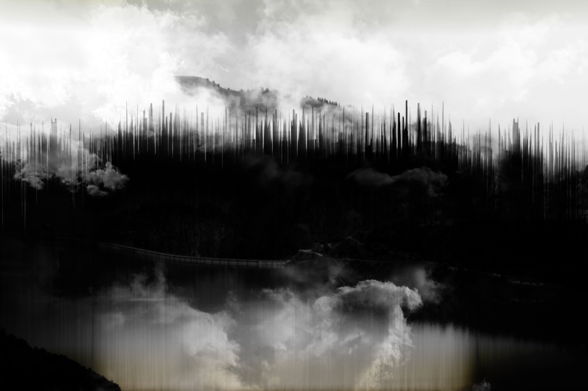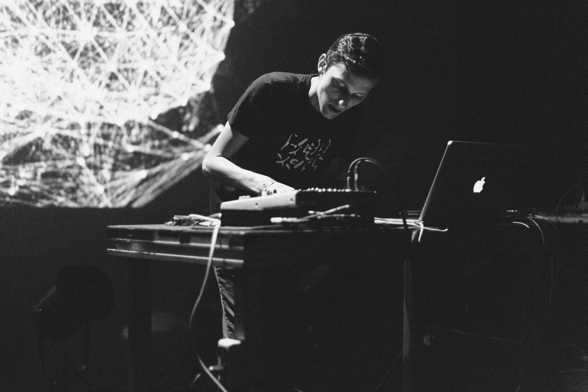
Sonntag, 27.09.
Hanseatenweg, Halle 2
12:00 – 14:00 Uhr
07 Matineekonzert: JTTP 2015 < Jeu de Temps / Times Play
Preisträger-Konzert des Kompositions-Wettbewerbs "JTTP 2015". Die fünf von einer internationalen Jury ausgewählten Werke werden von den Komponisten selbst gespielt. Werke von Madore (CA), Tremblay-Begin (CA), Campion (CA), Boucher (CA) und Hansen (US).
Xavier Madore, Récit d'un presqu'aller-retour (2014), 9 min
Charles-Philippe Tremblay-Begin, Valsalva (2014), 8 min
Myriam Boucher, Cités (2015), videomusic, 10 min
Devon Hansen, Habitation (2015), 6 min
Guillaume Campion, Littorale (2015), acousmatic documentary, 45 min
In Zusammenarbeit mit der Canadian Electroacoustic Community
Xavier Madore, Récit d'un presqu'aller-retour (2014)
False impression of progress; undeniable continuity of time passing distorted by a material stagnation, forcing a return to the same obsessive and persistent elements. It is with difficulty and misery that the couple “action / holding” — saturated by redundancy and at the threshold of changing states — eventually leads to a contemplation of objects previously insinuated. Falling into a familiar micro-articulated territory, this time armed with a fluidity and a renewed flow of energy, and concluding — almost — a round trip.

Charles-Philippe Tremblay-Begin performing the premiere of his work Valsalva (2014) © Jonathan Goulet
Charles-Philippe Tremblay-Begin, Valsalva (2014)
The Valsalva manœuvre, named after its inventor, Antonio Maria Valsalva, consists in recalibrating intra-auricular pressure by blocking the nose and blowing relatively strongly with it. After listening a few times at loud levels, this method seems essential. The piece uses three compositional strategies: iterations, drones and sudden impacts. Throughout the work, these procedures are combined to the point of saturation. Metallic sounds were preferred in the making of the piece, and different orchestral percussion instruments can be heard: tam-tams, antique cymbals, bell plates, tuning forks, many usual objects, and even a staircase used as an instrument rather than an acoustical space. To ensure a sense of unity to the work, almost all of the musical material was shaped through granular synthesis. The process gives an impression of swarming in almost each and every sound. In 2014, Valsalva won 2nd Prize in the SOCAN Awards for Young Composers and has been played in Buenos Aires during Sonoimágenes festival.
Guillaume Campion, Littorale (2015)
Littorale tells the story of an ancient repertoire of folksongs gathered in the beginning of the 20 century by ethnologist Marius Barbeau, in Haute-Gaspésie, a remote region of eastern Quebec, Canada. Through an alloy of acousmatic music and documentary techniques, the piece traces the history of the repertoire and the folksingers, while a renewed interest for this long forgotten heritage is taking place in Haute-Gaspésie.
Informants: J.-Augustin Saint-Laurent, Gaétan Pelletier, Benoît Thériault, Nathalie Synnett, Simon Landry, Daniel DeShaime, Micheline Pelletier. Thanks to the Canadian Museum of History, Fonds de recherche du Québec — Société et culture (FRQSC) and the Social Sciences and Humanities Research Council of Canada (SSHRC).

Screenshot from Myriam Boucher's videomusic work Cités (2015) © Myriam Boucher
Myriam Boucher, Cités (2015)
Des cités matérielles aux cités numériques.
le monde s’inverse
l’espace habité meurt et renaît
ruine ou poussière
peu importe
la trace n’a de résonance en nous
qu’un bruit qui perdure
Cités perdues. Cités nouvelles.
Material to digital cities.
the world is reversed
inhabited space dies and reborn
ruin or dust
no matter
trace has resonance in us
a noise that lasts

Devon Hansen at the Musée d'art contemporain de Montréal during MUTEK 2015 © Nathaniel Young
Devon Hansen, Habitation (2015)
Habitation is a composition for five channels focused on the connotative potency of sound and tactility. Informed by æsthetic aspects of architecture, the work makes use of steel, concrete and other building materials to explore distinct and detailed surfaces through sounds and the images they imply to the listening mind. Its narrative follows the individual materials as they interact to produce stable and palpable objects before disintegrating entirely, only to return to their unified forms once again.